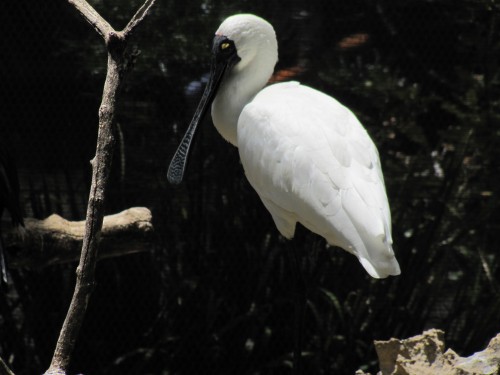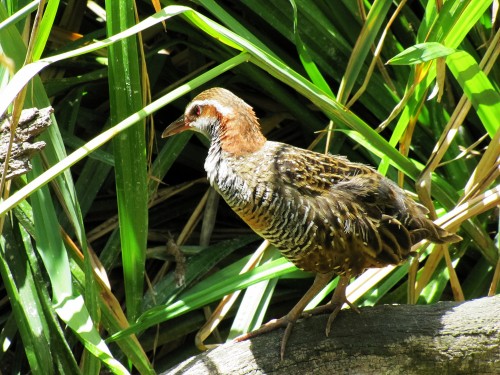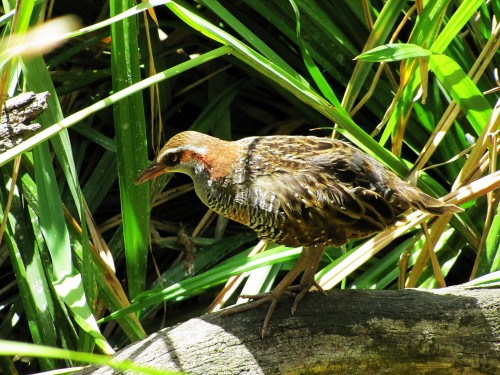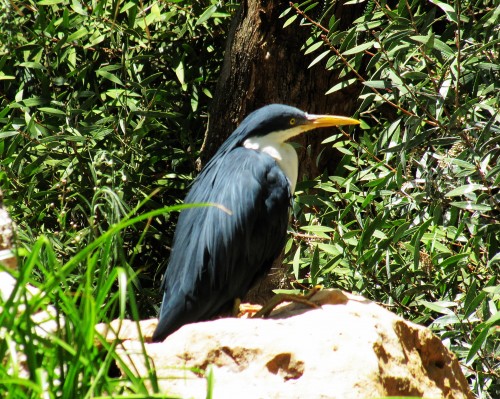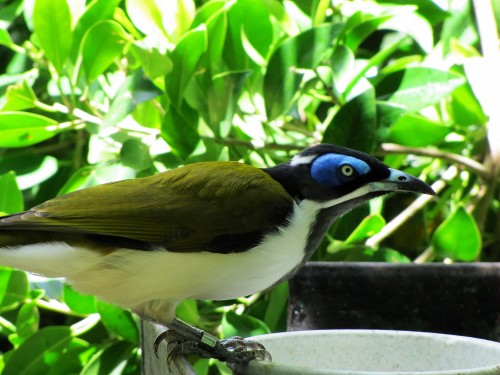Royal Spoonbill, Adelaide Zoo
Australia has two species of spoonbill, the Royal Spoonbill, shown above, and the Yellow-billed Spoonbill. The latter has a special place in my birding life; you can read here about how this bird played an important part in me becoming a birder.
I love seeing either of our species of spoonbill, so they are rather special birds to me. While both species are widespread throughout suitable habitat in Australia, in my experience they are generally not encountered in large numbers anywhere, usually from one individual to three or four in the same locality. Or perhaps I’m not looking in the right places.
Superb Parrot
On our recent trip to Sydney we stopped quite a few times for a meal break, to refuel or to change drivers. Generally we choose meals breaks where we know we have a good chance of seeing at least some birds. We’ve travelled this route many times in the last 15 years so we can visit family who live in Sydney. These trips have become very regular in the last four years. Grandchildren (ages nearly 5 and nearly 2) are something of an added attraction these days.
On our most recent trip a few weeks’ ago we didn’t get any chances to get out birding in the Sydney region itself. The first 10 days were very wet and cold, and them I spent the rest of the time confined to quarters with bronchitis. I’m still not fully over it three weeks later.
I did manage a little birding at meal breaks on our return journey. We were planning on stopping at the Wagga Wagga Botanic Gardens on the first day of our return trip, but fading light and a bitterly cold wind convinced us to press on towards Narrandera for the night. Just east of Wagga Wagga we stopped at a roadside rest area in the Borambola district to change drivers. As I opened the car door my attention was immediately caught by a bird call. It was coming from a eucalyptus tree some twenty metres from where we’d parked the car. I whipped out the binoculars – sadly they’d been neglected for most of our trip – and searched for the bird. Eventually I found it sitting right at the outer foliage of a tall tree, with only its head and neck showing. Too high for a photo and only just enough of the bird showing to give positive identification.
This was only about the third time I’ve seen a Superb Parrot, aptly named for its wonderful colours. Because I didn’t get a photo on this occasion I’ve used one I took in an aviary at the Adelaide Zoo a few years ago.
Further reading:
- Wagga Wagga Botanic Gardens
- Superb Parrot page on Birds in Backyards site
Buff-banded rail, Adelaide Zoo
Buff-banded Rails are sometimes very shy, secretive birds that rarely show themselves, preferring to skulk in the reeds and rushes along watercourses, swamps and wetlands.
On the other hand I have sometimes encountered these rails quite openly enjoying the presence of people. One example was a close encounter I had with one bird in the Royal Botanic Gardens in Sydney.
Buff-banded rails are a widespread species throughout Australia – except for the drier inland areas.
Further reading:
Pied Heron, Adelaide Zoo
I took this photo of a Pied Heron on a visit to the Adelaide Zoo here in South Australia. The bird was in one of the walk through aviaries in the zoo.
You can see more of my photos of this species, along with more information about it by clicking here.
Blue-faced Honeyeater, Adelaide Zoo
The first time I focussed my binoculars on a Blue-faced Honeyeater I was amazed at the brightness of its blue face. It was one of those special moments we sometimes get while birding.
As a result of that first great encounter, I enjoy every subsequent observation of this species. On the downside, not every sighting is as good as the one I had earlier this year in one of the walk through aviaries at the Adelaide Zoo here in South Australia. Being a captive bird quite at ease with hundreds of visitors to its home daily, this bird was quite happy to pose for me – or was it just too hungry to fly away. Note the identification band on the right leg.
The Blue-faced Honeyeater is found along coastal northern and eastern Australia, often found far inland from the coast where there is suitable habitat. In south eastern parts of our country it is more of an inland bird, generally avoiding the higher altitudes in Victoria and southern New South Wales.
Its preferred habitats include open forests, watercourses, woodlands, orchards, parks and gardens and farmlands.
For more of my photos of this species and another article click here.
